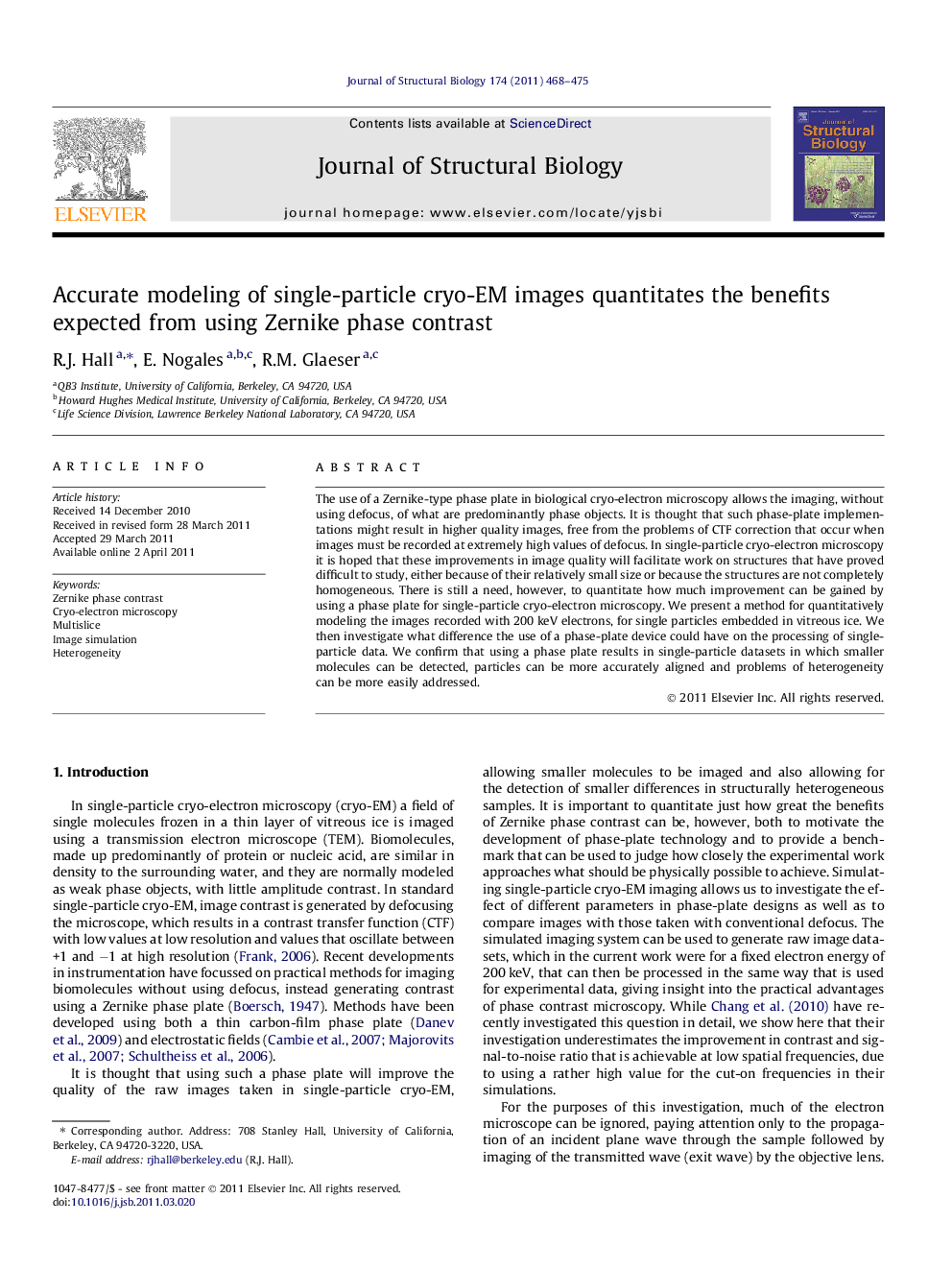| Article ID | Journal | Published Year | Pages | File Type |
|---|---|---|---|---|
| 5914853 | Journal of Structural Biology | 2011 | 8 Pages |
The use of a Zernike-type phase plate in biologic cryo-electron microscopy allows the imaging, without using defocus, of what are predominantly phase objects. It is thought that such phase-plate implementations might result in higher quality images, free from the problems of CTF correction that occur when images must be recorded at extremely high values of defocus. In single-particle cryo-electron microscopy it is hoped that these improvements in image quality will facilitate work on structures that have proved difficult to study, either because of their relatively small size or because the structures are not completely homogeneous. There is still a need, however, to quantitate how much improvement can be gained by using a phase plate for single-particle cryo-electron microscopy. We present a method for quantitatively modeling the images recorded with 200Â keV electrons, for single particles embedded in vitreous ice. We then investigate what difference the use of a phase-plate device could have on the processing of single-particle data. We confirm that using a phase plate results in single-particle datasets in which smaller molecules can be detected, particles can be more accurately aligned and problems of heterogeneity can be more easily addressed.
